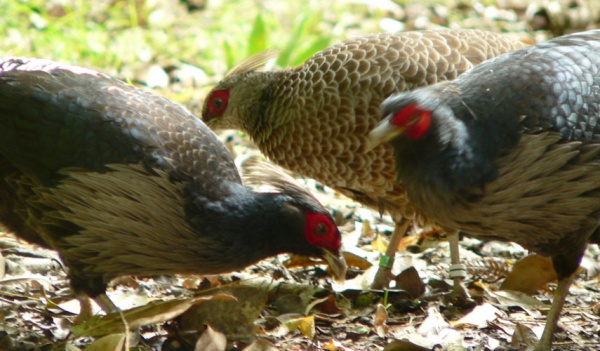Facts About Kalij pheasant
The Kalij Pheasant: A Closer Look
The kalij pheasant is a captivating bird that thrives in forests and thickets, predominantly found along the Himalayan foothills, extending from Pakistan to western Thailand. Males are distinguished by their striking glossy bluish-black plumage, while females display a more subdued brownish appearance. Both sexes share a distinctive bare red face and grayish legs. The species is generally common and widespread, though some eastern subspecies are facing threats to their survival.
Taxonomically, the kalij pheasant is closely related to the silver pheasant, and the two species are known to hybridize. There has been ongoing debate regarding the classification of certain subspecies, such as L. l. lineata and L. l. crawfurdi—some experts consider them part of the kalij pheasant, while others see them as subspecies of the silver pheasant. Recent genetic studies have resolved this debate, confirming their status as subspecies of the kalij pheasant.
There are nine recognized subspecies of the kalij pheasant, each with unique geographical distributions and plumage characteristics. Notably, the species was introduced to Hawaii in 1962 for use as game birds.
Male kalij pheasants range in length from 63 to 74 cm, while females measure between 50 to 60 cm. These subspecies can be broadly divided into two groups based on their plumage and geographical location. Males in the first group typically display glossy blue-black plumage with white markings, whereas the second group features males with white upperparts and tails adorned with intricate black patterns.
Female kalij pheasants have a brownish appearance, with variations in their markings and coloration depending on the subspecies. The species has been mentioned in various historical texts and scientific literature, often under the old spelling variations like "kaleege."
The kalij pheasant is not only a subject of scientific interest but also a beautiful exemplar of nature's diversity, showcasing a wide range of colors and patterns across its subspecies.

 China
China